Article directory
It’s been a long time since I’ve run an iOS test on a real machine. I helped debug it today and found that a lot of things have changed and some things are unfamiliar. I’ll record them here.
Get the real machine UDID
Creating a Profile requires binding the UDID of the device. How to obtain it?
The search results are varied, but actually using Xcode is enough.
After the phone is connected, click Add Additional Simulatorsto enter the device management page
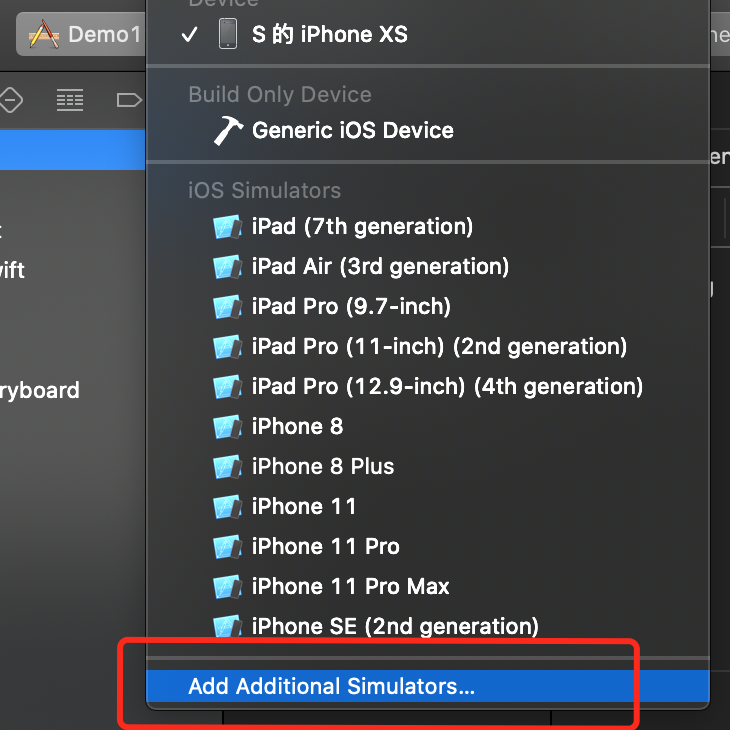
Switch to
the Identifier under the Device Tab, which is the UDID.
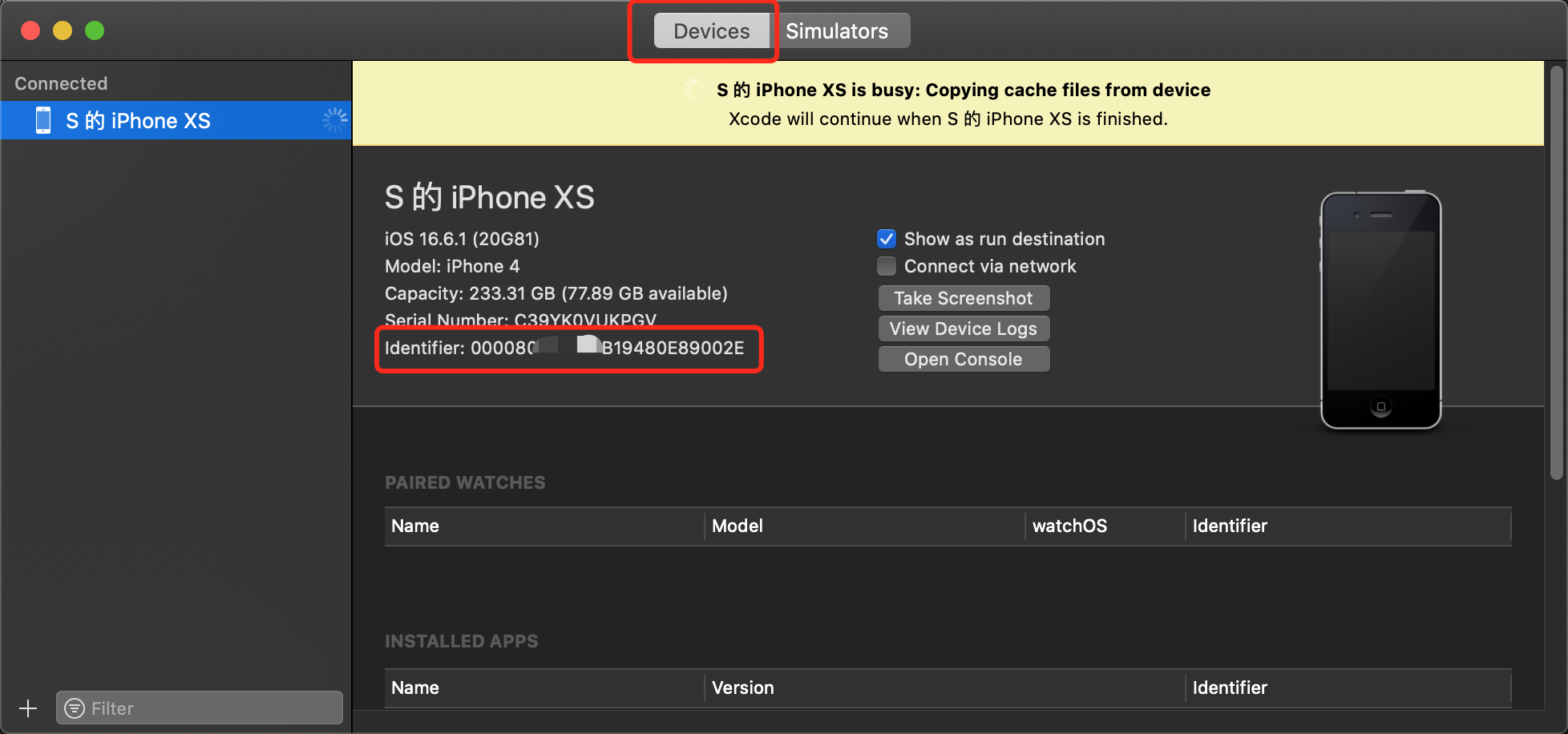
Please reconnect the device.
It's not necessarily a data cable issue, but an Xcode version issue.
If this error occurs, you can also see the relevant error information in the above device management interface. like:
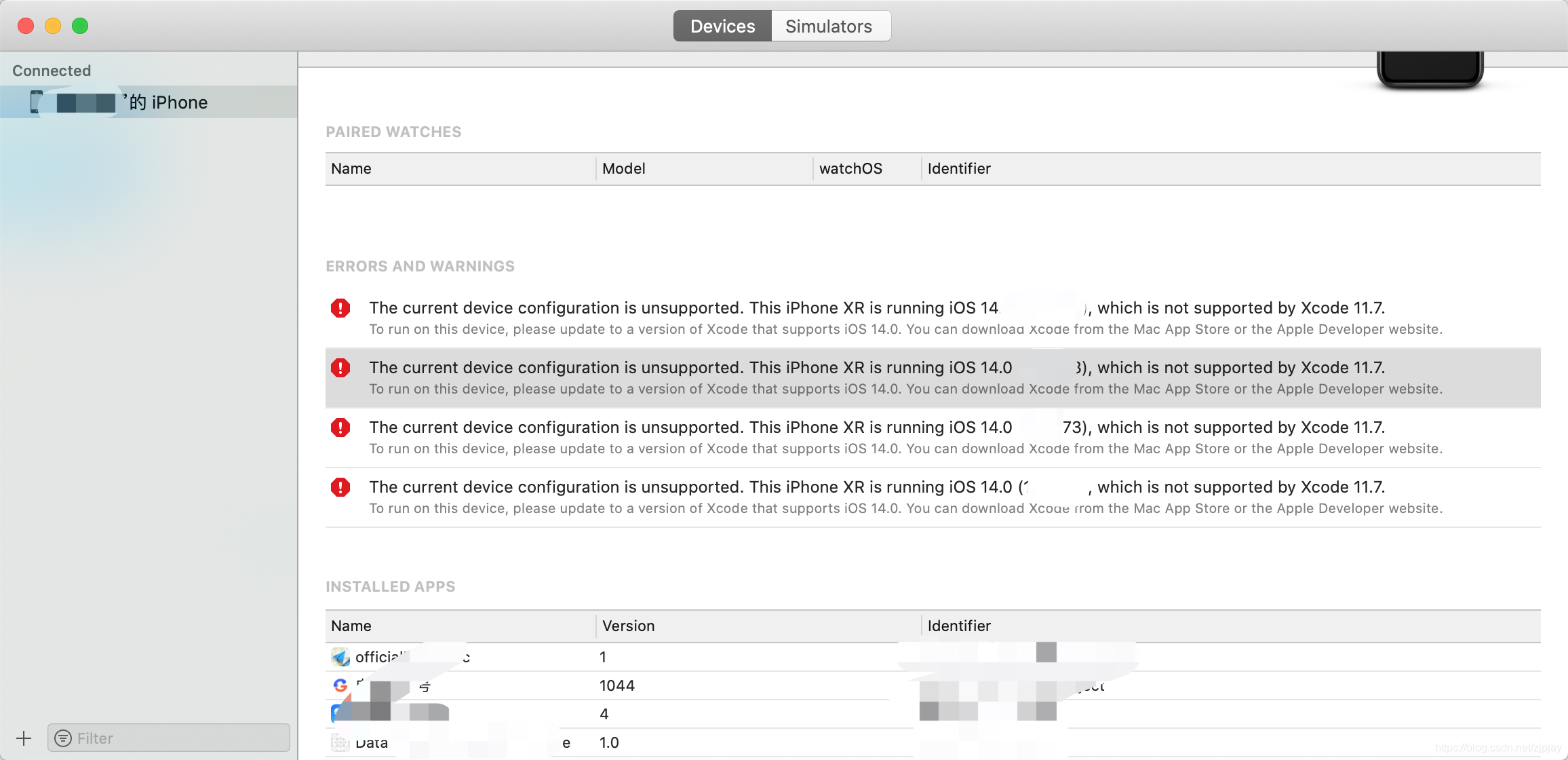
Reference: https://blog.csdn.net/zjpjay/article/details/108770188
iOS developer mode
During the debugging process of some versions of Xcode, the phone needs to be turned on 开发者模式to debug;
turn it on in Settings - Privacy and Security, and after switching to developer mode, the phone needs to be restarted to take effect.
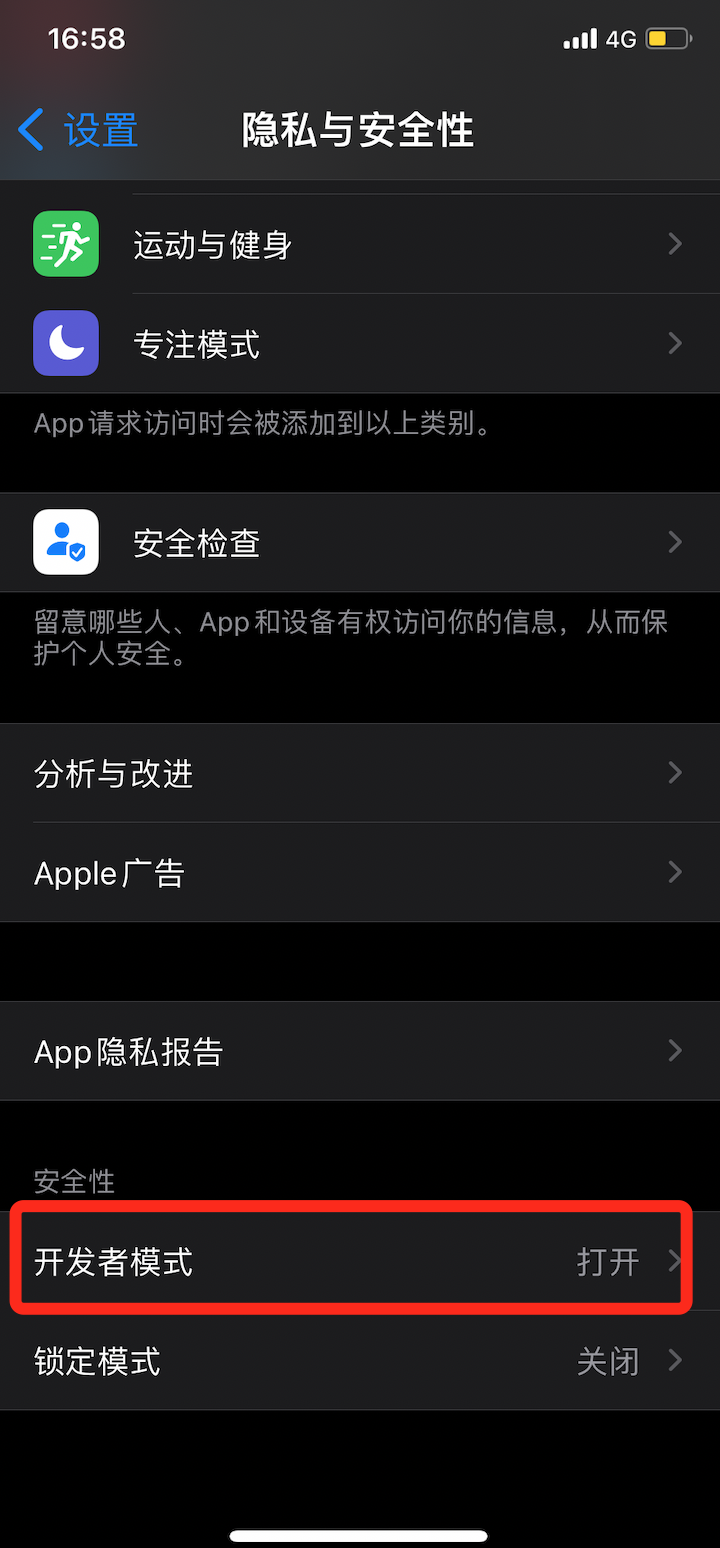
Fetching debug symbols
Click run. You may need to download some symbols. This process takes about 3 minutes.
After the download is complete, the code will automatically run.

Library not found for
When pod introduces a third-party library for compilation, Xcode prompts library not found for. Generally, the library cannot be found. The search results will prompt you to look at the search library path;
but students who work on both iOS and macOS can look at the podfile to introduce the third-party library. The target is not iOS.
The file couldn’t be opened. – 修改 objectVersion
Synchronize the project between two computers. If the Xcode versions are different, an error may be reported during runtime:
The file couldn’t be opened
Generally, the objectVersion in the project configuration file causes incompatibility. The processing method is as follows:
Find the project file appname.xcodeproj(not .xcworkspacefile) and display the package content

Open project.pbxprojthe file (I use VS Code),
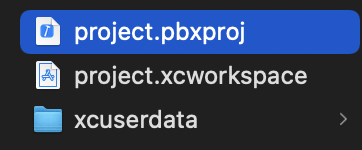
You can see that the objectVersion version was originally 56, but I changed it to 48. Open the project again to run it.
I haven't delved into the specific objectVersion corresponding to each Xcode; if you are not sure which value is appropriate, you can also create a new project using the current Xcode and take a look at the corresponding objectVersion.
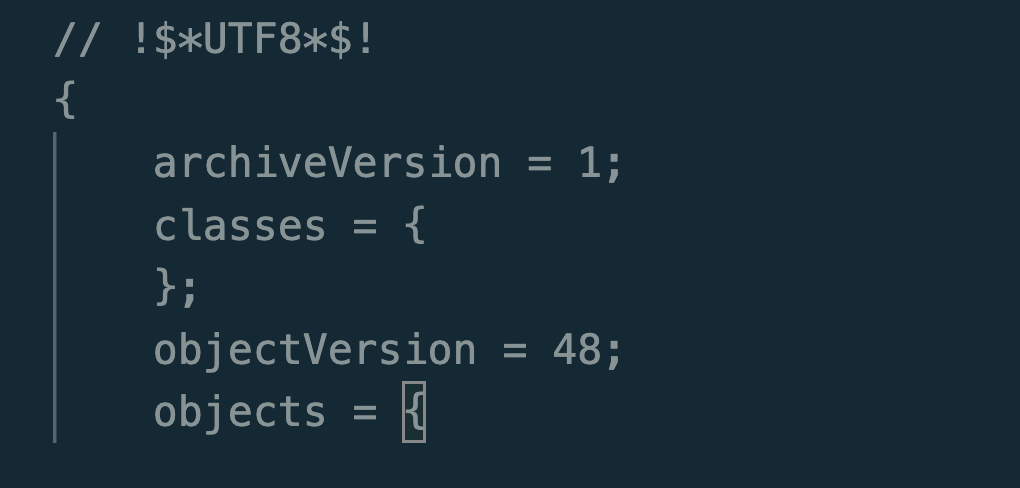
For Pod
Find the project location of the Pod. If you don't know, you can do this in xcode.


Open the same project.pbxprojand modify objectVersionthe key
Any iOS Device No simulator available
It also appears in the scenario of synchronizing Xcode projects between two different versions.
Runtime prompt:
A build only device cannot be used to run this target.
Please select an available device or choose a simulated device as the destination.
The simulator displays: Any iOS Device, and cannot be added.
At this time, you can check the Deployment Info
for the code that may have been synchronized before. The selected simulator version is too high; your current Xcode does not support it. Try turning it down a bit.
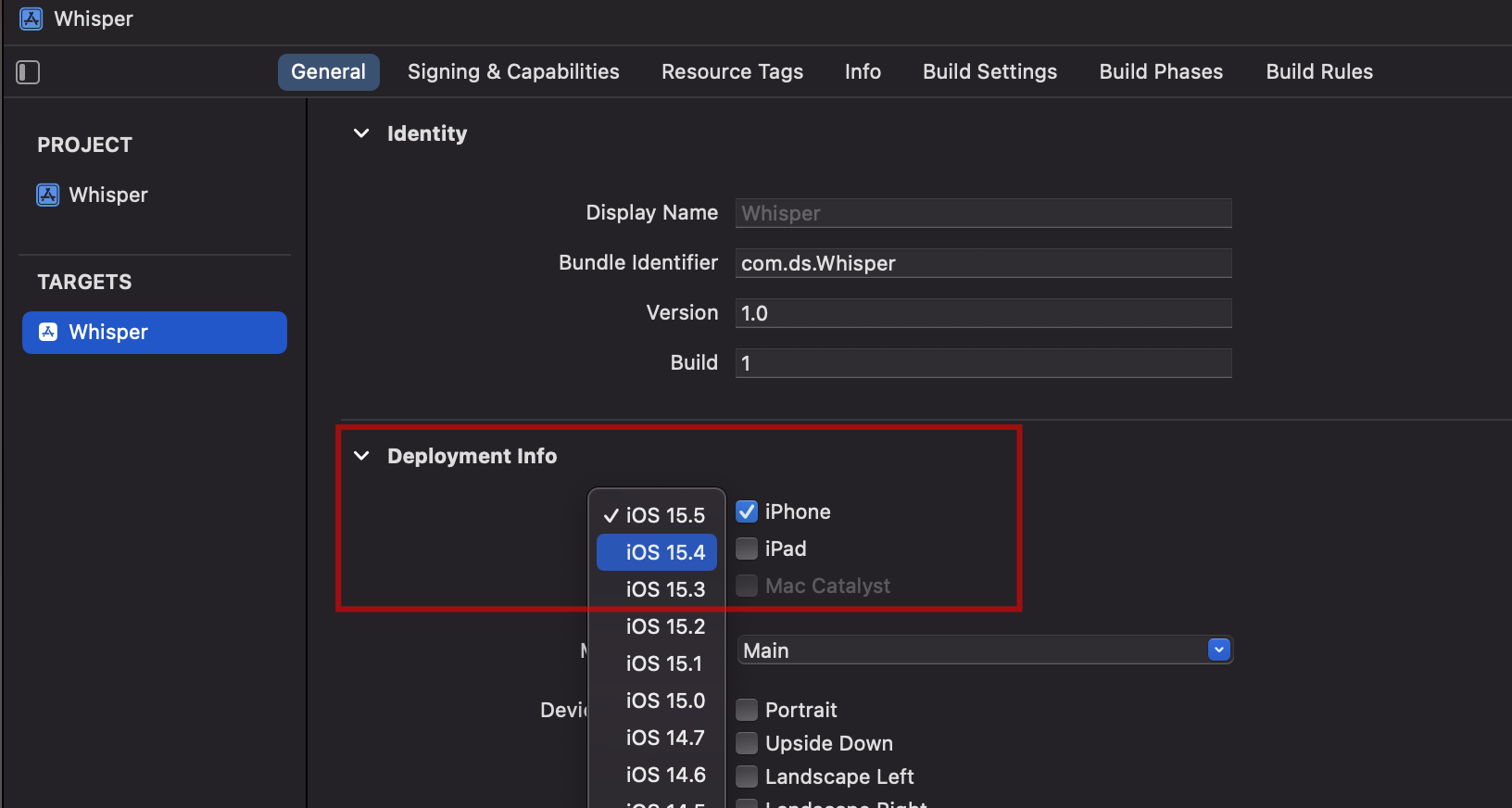
Italy 2023-12-24 (Sun)